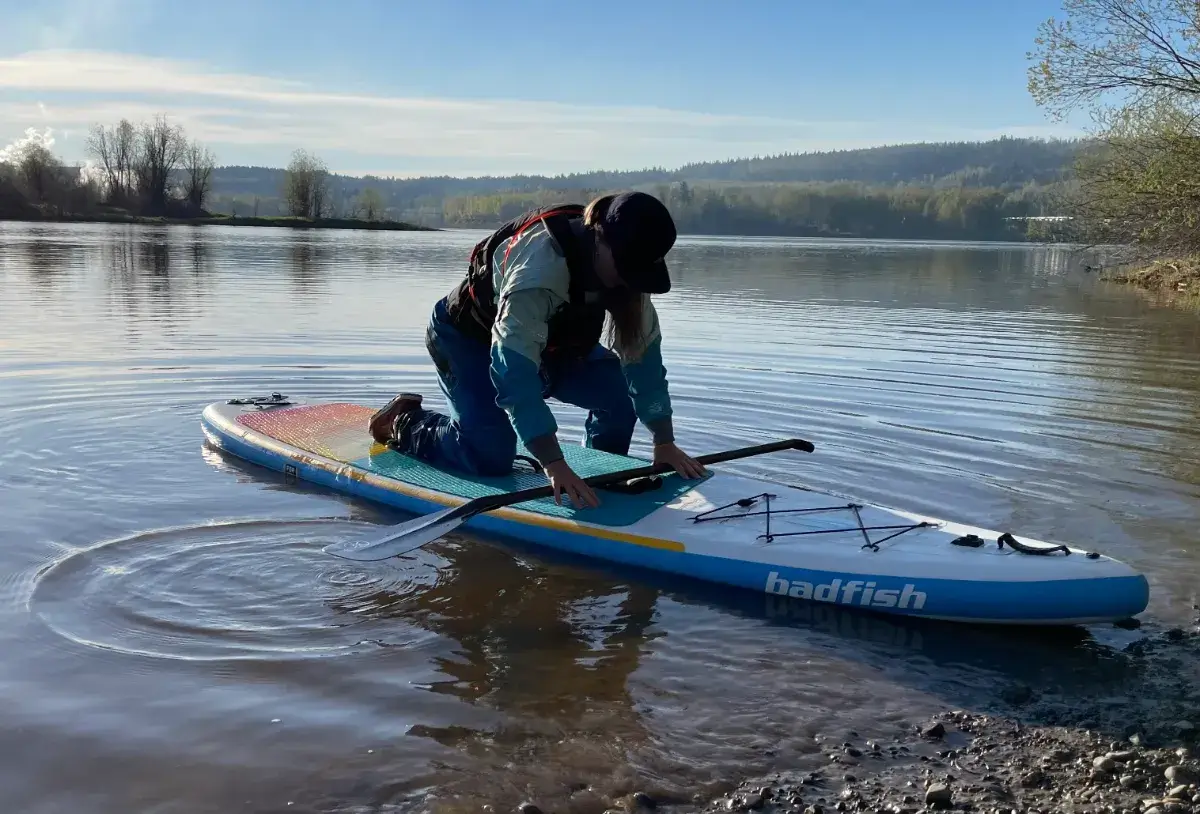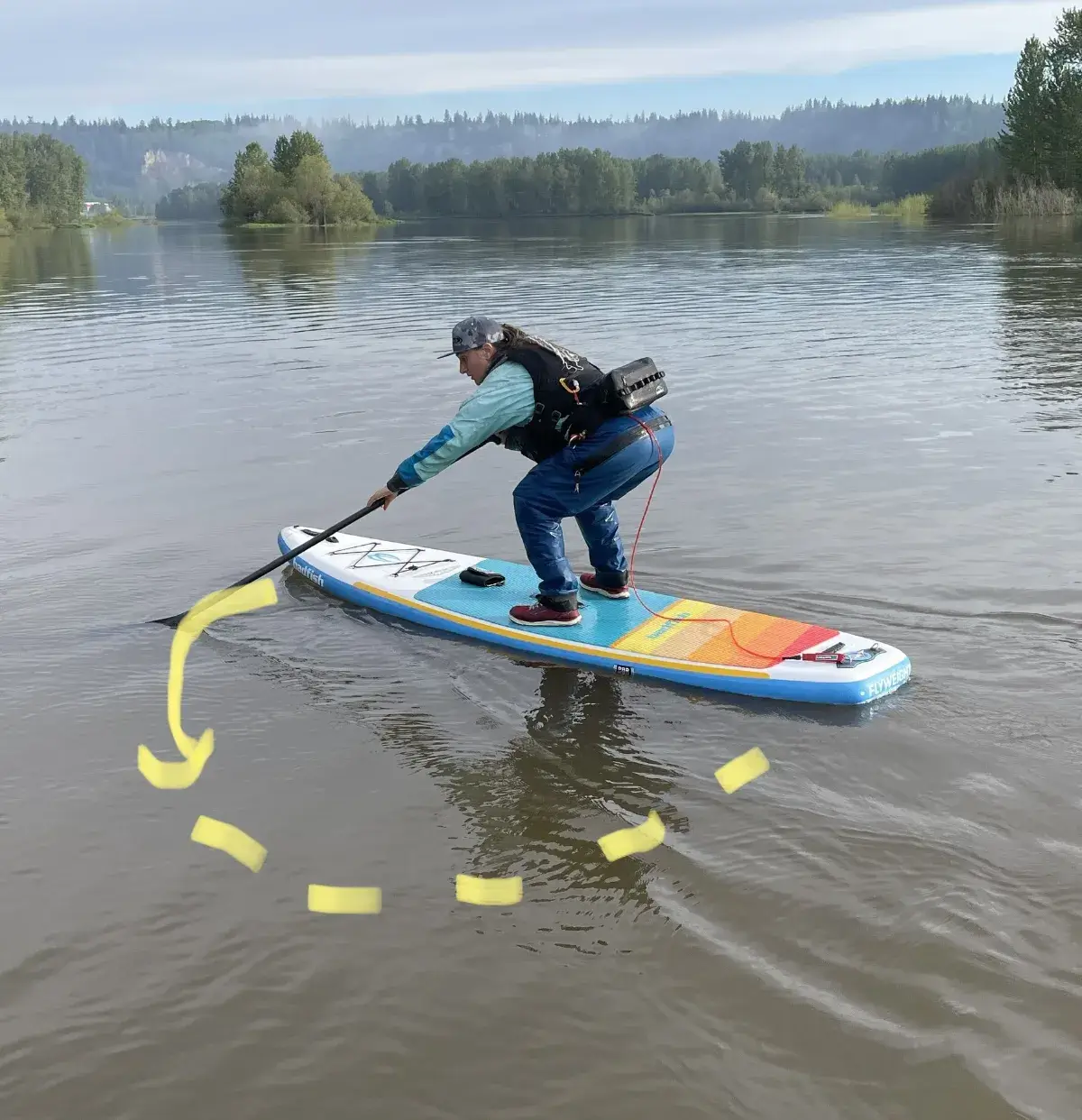Here are a few simple tips to launching and landing your paddleboard on flat water. These tips will help to keep you safe in the shallow waters and also prevent damage to your board and equipment.
Shop AQ Outdoors SUP Collection
Launching a stand up paddleboard
Carrying the paddleboard
There are a couple different ways to carry a paddleboard. There is the suitcase method, the over the head surf board, and the two person carry.
Whichever method that is being used, the priority when approaching the water's edge is to have the fins first. This technique puts the fins out into the deepest water, thus there is less risk of damage to the fins.
A common thing to see is the paddler awkwardly having to turn themselves around at the shore edge. Pick the board up with the attention to the direction of the fins.
Before you enter the water check to make sure your leash is attached to the board and your pfd is properly secured.
NRS Quick-Release SUP Leash

$89.95
The NRS Quick-Release SUP leash works with rescue and recreational PFDs, allowing paddlers to safely stay connected to the board when necessary and quickly disengage from the leash and board during a bad swim. Features A stainless steel D-ring at… Read More
Putting the board in the water
Walk into the water to a depth that is just below your knees. It's recommended to have at least a foot of water deep to place the board into.
As you set the board onto the water be mindful to watch the nose as it could still make contact with shore. Once the board is placed onto the water, secure the ankle cuff of your leash to your ankle.
Get on the paddleboard
Before getting on make sure you are starting in knee deep water.
Locate the carrying handle. Place both hands over a foot up from the carrying handle towards the nose. The hands should be placed evenly about a shoulder width apart.
Aiming to have your knees about shoulder width apart and centered across the carrying handle, place one knee 6 inches from one side of the carrying handle.
Balance on both hands and your placed knee and get your other knee on the other side of the carrying handle. From the familiar down-on-all-fours position, straighten up to a kneeling position.
Safe to stand
Before standing, paddle the board on your knees to deeper water.
You can insert the blade and shaft of your paddle into the water to test how deep it is. Now it's time to stand up
Now let us look at a safe method for landing a stand up paddleboard. It is the launching method in reverse with a few adjustments.
Landing a stand up paddleboard
Safe to stand
As you are approaching shore it is a good idea to get down from a standing position to a kneeling position. This lowers your center of gravity which is a better point of balance. Use a reverse stroke to the slow the board down as you approach shore.
Get off the paddleboard
Place both hands on the deck of the board and assume the down-on-all-fours position. Carefully put down one foot into the water and make contact with the bottom.
Shift your body weight onto that leg and remove your other leg off of the board. Take your hands off the board and stand up. Getting off the board in knee deep water is ideal.
Taking the paddleboard off the water
Removing the ankle cuff of your leash at this time, this benefits you so that you are not tripping over it while walking the board out of the water. Secure the cuff to the carry handle so you don't drag it in the dirt.
With some paddleboards there can be a lot of surface tension holding them in place when you go to pick them up. Grab the carry handle with your paddle-free hand, reach over with the paddle hand and lift the rail of the board off the water while picking it up with the carry handle.
Carry the paddleboard
Carry the board out of the water and to a safe location. If you need a break while carrying the board you can lean it against your legs or place it deck down with the fins up. Placing the deck down means the fins will avoid getting damaged.
NRS Yak Yak Boat Cart

$159.95
Let the NRS Yak Yak Boat Cart haul your boat to the water. With sand-conquering tires, element-resistant materials and 30% lighter weight than other boat carts, this little powerhouse saves your back. The NRS Yak Yak Boat Cart is plain… Read More
How to Launch and Land A Stand Up Paddleboard Summary
The simple task of getting onto and off the water can be thought of in these four steps: carrying the board, board placement, getting on and off the board, and safe to stand. Keeping these in mind, a paddler can easily find their way safely to and from the shore line to paddling out on their next adventure.
Shop AQ Outdoors SUP Collection
Related SUP Content
Everything you need to know about whitewater SUP
Mastering the forward SUP stroke
Complete beginner guide to flatwater SUP
How to Do a Sweep Stroke on SUP
AQ Outdoors Contact
Edmonton: (p) 780 463-4892 (e) info@aquabaticsedmonton.com
Calgary: (p) 403 288-9283 (e) info@aqoutdoors.com














